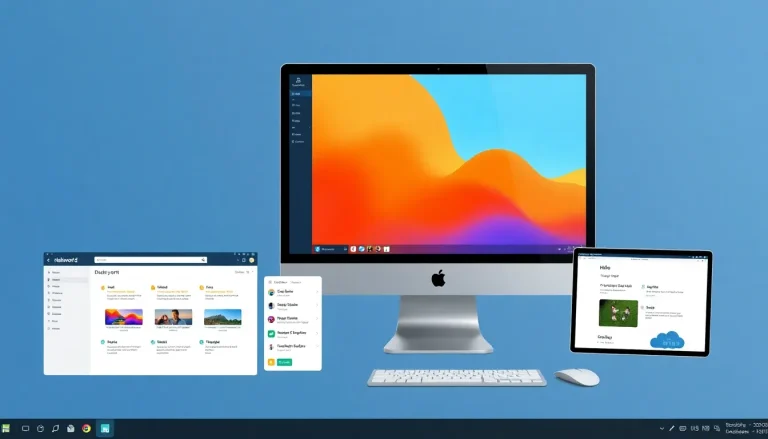
1. What Are Export Tariffs?
1.1 Definition and Overview of Export Tariffs
Export tariffs, often termed export duties, are taxes imposed by governments on goods that are shipped out of their country. This means that when products are exported, the exporter must pay a fee to the government, which can be based either on the product’s value or weight. Unlike import tariffs, which increase the cost of foreign goods entering a country, export tariffs have a profound impact on the pricing structure for goods being sold internationally. For instance, a country might implement an export tariff on natural resources like oil or minerals to maximize revenue from these finite assets. Understanding export tariffs is essential for businesses looking to operate on a global scale, as these tariffs can significantly alter market dynamics.
1.2 The Purpose of Export Tariffs
The primary purpose of export tariffs is to generate revenue for the government. By placing a tax on goods leaving the country, governments can capitalize on their local resources, ensuring that they receive a portion of the economic benefits derived from these exports. Additionally, export tariffs can be used strategically to control the domestic supply of certain goods. For example, by taxing exports on agricultural products, a government can ensure that there are sufficient supplies within its borders to keep prices stable for its citizens.
1.3 Differences Between Export Tariffs and Import Tariffs
While export tariffs and import tariffs both serve to influence trade, they operate in opposite directions. Import tariffs are designed to discourage foreign products from entering a market, thereby protecting domestic industries from international competition. Conversely, export tariffs aim to regulate the outflow of goods, which can serve multiple ends, such as preserving local resources or generating revenue. Moreover, the economic impacts of these tariffs vary: import tariffs often lead to higher prices for consumers domestically, while export tariffs can influence production volumes and pricing for exporters abroad.
2. How Export Tariffs Affect International Trade
2.1 Economic Impact on Exporting Countries
Export tariffs can significantly impact the economic landscape of a country. Charging higher fees on exports may limit the availability of certain goods in international markets, often causing prices to increase for those products abroad. This can lead to a decrease in demand for exported goods, as international buyers may look for cheaper alternatives from countries with more favorable tariff policies. For instance, during times of high demand, a sudden increase in export tariffs on agricultural products might deter foreign buyers, forcing local farmers and producers to either absorb the costs or limit their production altogether.
2.2 Case Studies of Export Tariffs in Action
Examining real-world examples can provide insight into how export tariffs function. A notable case occurred in 2020 when Indonesia imposed an export tax on palm oil in an attempt to keep domestic prices down while also generating revenue. This move did not only affect the price of palm oil but also had a ripple effect on the economies of countries dependent on Indonesian palm oil. Similarly, Russia’s export tariffs on timber have been seen as an effort to control domestic resource management, leading to shifts in timber pricing globally and impacting countries reliant on timber imports.
2.3 Global Trade Dynamics and Tariff Influence
The relationship between export tariffs and international trade is complex. Tariffs can create tensions between trading partners, often leading to retaliatory tariffs that disrupt the flow of goods. The ongoing trade disputes between the U.S. and China illustrate this dynamic; both countries have enacted both import and export tariffs that have resulted in significant volatility within global markets. As countries respond to each other’s tariffs, the interconnected nature of international trade relationships is tested, often resulting in misunderstandings and economic strain.
3. Key Regulations Governing Export Tariffs
3.1 National and International Laws on Export Tariffs
Export tariffs are governed by a mix of national legislation and international trade agreements. In the U.S., for instance, Article 1, Section 9 of the Constitution prohibits export taxes unless specifically authorized by Congress. This highlights the complexity of how and when export tariffs can be applied. Regulations also vary significantly by country, with some nations using export tariffs as a protective measure for domestic industries while others abstain altogether to encourage growth through international trade.
3.2 The Role of Trade Agreements in Tariff Regulations
Trade agreements play a crucial role in determining the application of export tariffs. Agreements such as NAFTA, now replaced by USMCA, actively encourage member countries to reduce or eliminate tariffs to foster free trade. This has led several countries to reconsider their export tariff strategies, often opting for lower tariffs to promote more substantial international partnerships. Understanding these agreements is essential for businesses looking to navigate the complexities of global trade.
3.3 Compliance and Enforcement Mechanisms
Compliance with regulations regarding export tariffs is critical for international trade success. Governments establish various enforcement mechanisms to ensure compliance, which can include penalties for non-compliance, audits, and documentation requirements. Exporters must maintain thorough records to demonstrate compliance with both domestic and international tariff regulations. Failure to comply can result in significant financial repercussions or legal challenges that can impede a company’s ability to do business internationally.
4. Strategies for Navigating Export Tariffs
4.1 Best Practices for Exporters
Exporters can adopt several best practices to effectively navigate export tariffs. First, staying informed about the latest tariff regulations in target markets is vital. This involves not only understanding current rates but also being aware of upcoming changes or trade negotiations that may affect these tariffs. Additionally, exporters should engage in thorough cost analysis to determine the impact of tariffs on pricing strategies and profit margins, allowing for informed business or pricing decisions.
4.2 Leveraging Trade Agreements
Utilizing existing trade agreements can provide exporters with substantial benefits in managing tariffs. By understanding how to take advantage of preferential tariff rates or exemptions that trade agreements may offer, businesses can enhance their competitive edge. Exporters should collaborate with trade advisors or legal experts to ensure they are leveraging these agreements effectively while being compliant with the regulations involved.
4.3 Risk Management in Managing Export Tariffs
Risk management is a key component in preparing for the volatility associated with export tariffs. Businesses need to develop flexible sourcing strategies that can respond to changes in tariff rates. For instance, diversifying supply chains may help cushion against tariff shocks. Additionally, establishing strong relationships with logistics partners can enhance a company’s ability to adapt quickly to regulatory changes, thereby minimizing disruption and loss.
5. Future Trends in Export Tariffs
5.1 The Influence of Political Decisions on Tariff Changes
The political landscape has a significant impact on export tariffs, often shifting with changing administrations, international relations, and economic policies. Political shifts can create an environment of uncertainty which can complicate forecasting for businesses that depend on exporting goods. As governments grapple with economic pressures and trade strategies, exporters must remain agile and responsive to policy changes that could affect their operations.
5.2 Emerging Markets and Export Tariff Opportunities
Emerging markets present both challenges and opportunities regarding export tariffs. As countries grow economically, the demand for their goods often rises on the international stage, leading to potential tariff adjustments. Exporters should conduct market research to identify these emerging markets and evaluate how tariffs could impact access to these markets. Effective market entry strategies can help capitalize on these new opportunities while navigating the complexities of export tariffs.
5.3 Preparing for Regulatory Changes in Trade Policies
As global trade policies evolve, being proactive in preparing for regulatory changes in export tariffs is crucial for maintaining business continuity. Businesses should monitor global economic trends, participate in industry groups, and keep lines of communication open with trade organizations to stay ahead of potential tariff changes. Establishing a regulatory compliance framework within the company can enhance adaptability to sudden policy shifts, ensuring that the business can respond effectively.





